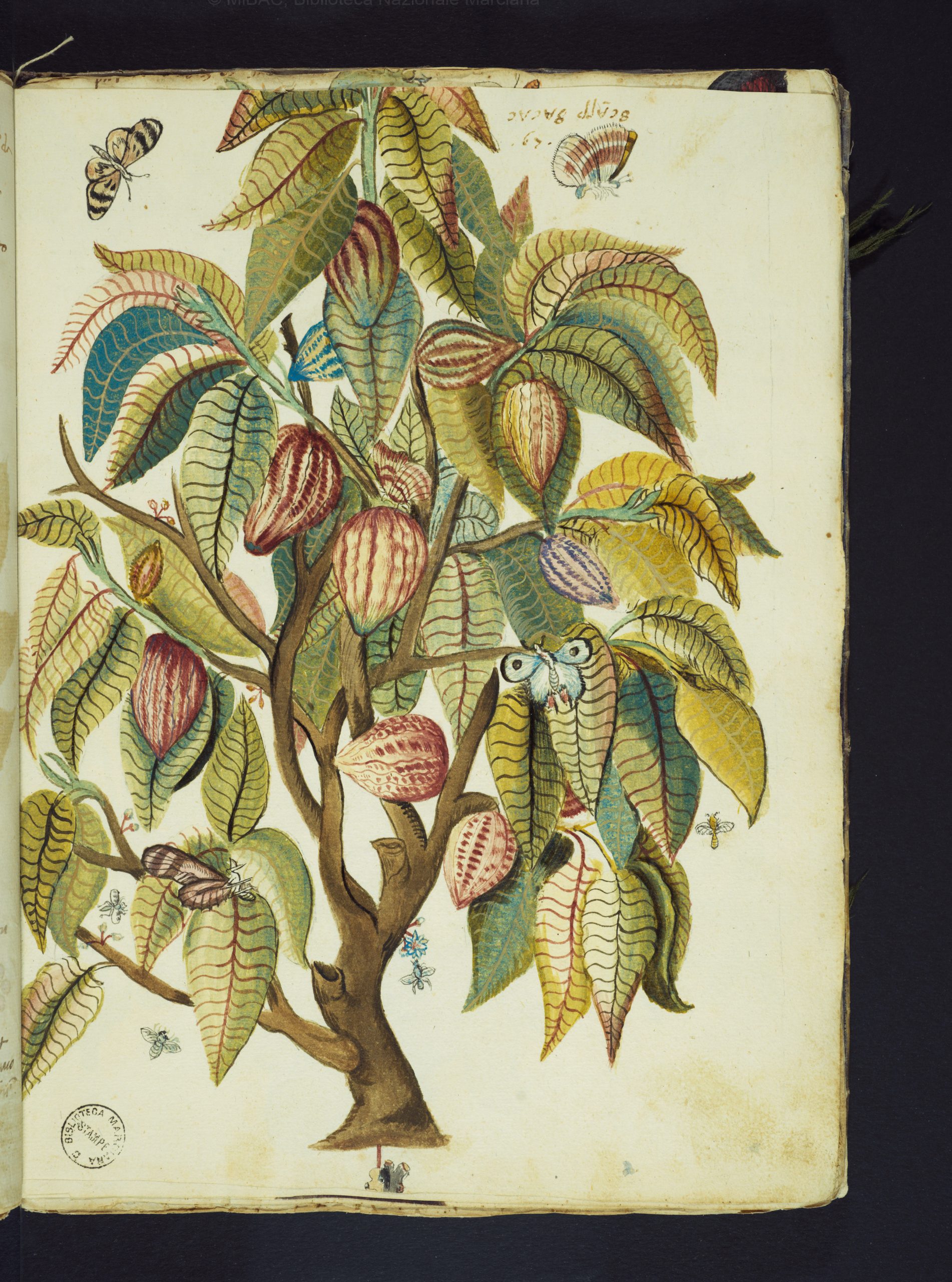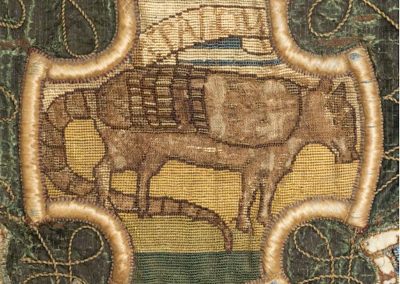Among the rich holdings of the Biblioteca Marciana on the Piazza di San Marco in Venice is the Blue Book (Libro azzurro). On the very first folio you see a tree bearing red fruit directly from its branches, with four oversized butterflies poised in the air or perched on a branch in a very non-naturalistic way. If you continue to leaf through the 161 pages of the Blue Book, no fewer than 11 tree images share these same peculiar stylistic characteristics. The compiler of the volumes is Pier’Antonio Michiel who was born into an aristocratic family in Venice in 1510. The 11 images in question are the result of two successive copying operations. Original paintings done in ‘India’, i.e. the Americas, were taken to the court of the Holy Roman emperor Charles V (Charles I of Spain). Copies of these were made for Marcantonio da Mula, and a second series of copies were made from these in turn for Pier’Antonio Michiel, which are the ones he included in his Blue Book. On the basis of stylistic considerations, it may be assumed that the 11 trees represented in Michiel’s Blue Book are American. One tree image in particular, however, does offer a further clue. The tree on folio 67 is named ‘Cacao blanco da Indiani overo Spagnioli.’ We see a tree (like the others, depicted without roots) with a profusion of green or greenish-blue leaves and red-brownish fruits, around which are flitting four butterflies and several other insects. As the name indicates, in this case it is not difficult to recognise a (schematic) image of a cacao tree.







